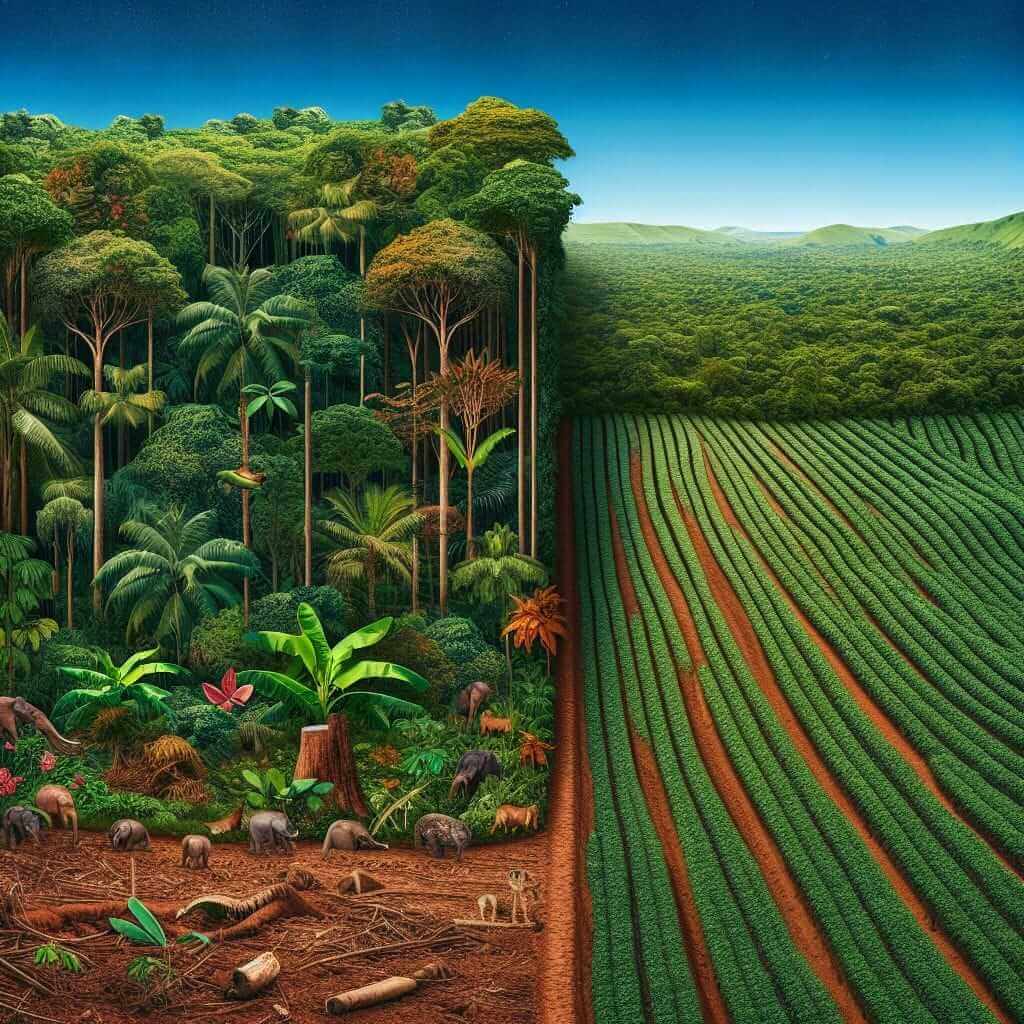“Biodiversity conservation strategies” is a topic frequently appearing in IELTS Writing Task 2, especially in the current global context of escalating environmental challenges. Understanding how to effectively address this theme in your IELTS essay is crucial for achieving a high band score. This article will provide you with valuable insights, vocabulary, and a sample essay to help you excel in your IELTS Writing exam.
Let’s examine some IELTS essay questions related to this topic that have emerged in past exams:
- The loss of biodiversity is a major problem facing the world today. What are the causes of this problem, and what measures can be taken to address it?
- Some people believe that the best way to protect endangered species is to create wildlife parks and sanctuaries. Others argue that more should be done to address the root causes of extinction, such as habitat loss and climate change. Discuss both views and give your own opinion.
Sample Essay: Biodiversity Conservation Strategies
For this article, let’s focus on the first question:
<blockquote><strong>The loss of biodiversity is a major problem facing the world today. What are the causes of this problem, and what measures can be taken to address it? </strong></blockquote>
Analysis
This question requires you to discuss both the causes of biodiversity loss and the solutions to tackle this issue. You are expected to provide a balanced analysis, exploring both sides of the issue, and offer well-supported opinions.
Essay Response
Biodiversity, the intricate web of life on Earth, is facing an unprecedented crisis with species disappearing at alarming rates. This essay will delve into the primary drivers of this decline and explore effective strategies for conservation.
One major cause of biodiversity loss is habitat destruction. As human populations expand and demand for resources increases, natural habitats are being converted into agricultural land, urban areas, and infrastructure projects. This fragmentation and destruction of ecosystems leave species with limited space to thrive, leading to population decline and extinction. For instance, deforestation for palm oil plantations in Southeast Asia has severely threatened the habitat of orangutans, pushing them closer to the brink.
Furthermore, climate change is exacerbating the situation. Rising temperatures, altered precipitation patterns, and extreme weather events disrupt ecosystems and the species that depend on them. Coral reefs, for example, are highly vulnerable to ocean acidification and bleaching caused by climate change, impacting marine biodiversity and the livelihoods of millions.
Addressing this crisis requires multifaceted solutions. Firstly, protecting and restoring habitats is crucial. Establishing protected areas, such as national parks and wildlife reserves, can provide safe havens for species and allow ecosystems to recover. Furthermore, sustainable land management practices, such as reforestation and afforestation, can help mitigate habitat loss and create corridors for wildlife.
Secondly, combating climate change through reducing greenhouse gas emissions is paramount. Transitioning to renewable energy sources, improving energy efficiency, and promoting sustainable transportation are essential steps in the right direction. International agreements, like the Paris Climate Accord, play a vital role in fostering global cooperation to address this global challenge.
In conclusion, the loss of biodiversity is a pressing issue driven by habitat destruction and climate change. By prioritizing habitat protection and restoration, alongside tackling climate change, we can strive to conserve the intricate tapestry of life on Earth for generations to come.
Word Count: 286 words
Writing Tips
- Structure: Follow a clear structure, introducing the topic, discussing causes and solutions in separate paragraphs, and providing a concise conclusion.
- Vocabulary: Use topic-specific vocabulary like “habitat destruction,” “climate change,” “protected areas,” and “renewable energy.”
- Examples: Support your points with relevant examples, such as the impact of deforestation on orangutans or the effects of climate change on coral reefs.
- Grammar: Pay attention to grammar and punctuation to ensure clarity and coherence.
Key Vocabulary
- Biodiversity (noun /ˌbaɪ.oʊ.daɪˈvɝː.sə.t̬i/): The variety of plant and animal life in the world or in a particular habitat.
- Habitat destruction (noun /ˈhæb.ɪ.tæt dɪˈstrʌk.ʃən/): The process by which a natural habitat becomes incapable of supporting its native species.
- Climate change (noun /ˈklaɪ.mət ˌtʃeɪndʒ/): A long-term change in the average weather patterns that have come to define Earth’s local, regional and global climates.
- Protected areas (noun /prəˈtek.tɪd ˈer.i.əz/): Locations which receive protection because of their recognized natural, ecological or cultural value.
- Renewable energy (noun /riˈnuː.ə.bəl ˈen.ɚ.dʒi/): Energy from a source that is not depleted when used, such as wind or solar power.

Conclusion
“Biodiversity conservation strategies” is a topic likely to persist in future IELTS exams. By familiarizing yourself with common themes, expanding your vocabulary, and practicing your writing skills, you can confidently approach this topic and achieve a high score. Remember to stay updated on current environmental issues and practice formulating your own arguments.
For further reading on related environmental topics, you can explore the effects of urbanization on biodiversity, the impact of climate change on wildlife habitats, and the role of government policy in promoting renewable energy.